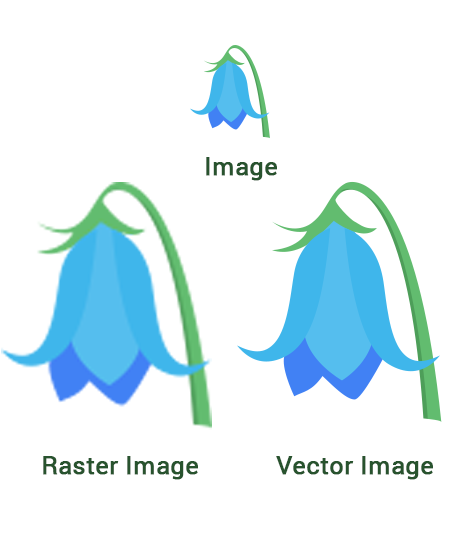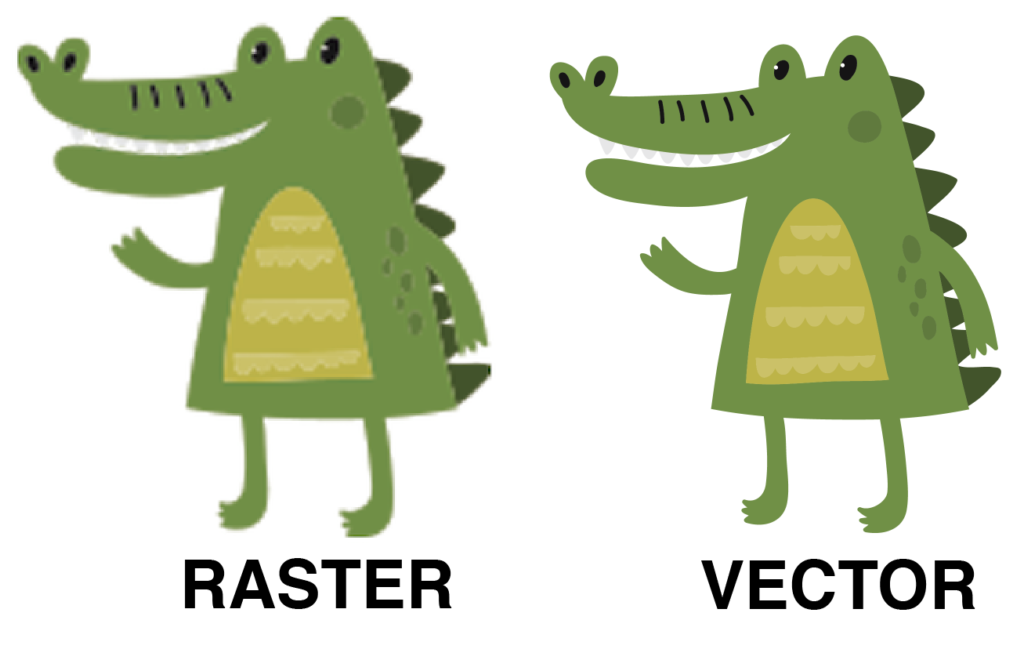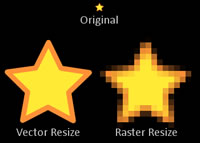

Vectors are essentially geometric shapes that can be stretched or curved as need be.

File sizes tend to be larger than vector formats.The amount of pixel and color information means that specific parts of the image can be difficult to isolate without complex masking.Many advanced texture effects work best (or only) with raster images.You are able to zoom in and edit each pixel for finer editing.Raster images are ideal to use when you want to show the subtleties of color gradients and shading-for example when you are editing photographs or painting photorealistic illustrations-due to the amount of color information they can hold.Raster image pros and cons Pros The pixels of a raster image are visible when you zoom in.

At the same time, fewer pixels means that an image will show up as tiny or will ‘pixelate’ when resized because there are not enough pixels to provide seamless shading. The more pixels, the higher quality (or resolution) the image is, given that there is more opportunity for color blending when viewed from a distance. This means that raster images cannot be resized without distortion because the number of pixels are fixed. When taking a photo or shooting a video, the lens translates the reflected light into tiny colored pixels that combine to form a realistic digital image.īecause each pixel is designated to a space on the grid, raster images are resolution dependent. Whenever you use the brush tool to create a digital illustration, every brush stroke adds pixels along the brush path-the number of pixels dependent on the size of the Photoshop document and the radius of the brush you are using. Although the pixel grid is not visible, designers add to it when creating graphics in a raster program like Photoshop.
#RASTER AND VECTOR IMAGE DIFFERENCE SERIES#
Think of a raster like a mosaic: from up close it just looks like a series of squares, but from further away an image forms.

A pixel is a square of solid color made from the combination of red, green and blue light (also known as subpixels). Raster imagesĪ raster image is any digital graphic that is made out of pixels arranged on a static grid. vector images and help you decide which format fits your project. We’ll look at the nuances between raster vs. The answer really lies in what you are creating. Both raster and vector images have their own advantages and downfalls depending on the project at hand.
#RASTER AND VECTOR IMAGE DIFFERENCE PRO#
It’s important to understand the fine differences between them and when to work with each-no matter if you’re a new designer, a seasoned pro or a marketer looking to hire a designer. Vector and raster images differ in their resolution, the amount of detail they contain, and where they are used.


 0 kommentar(er)
0 kommentar(er)
